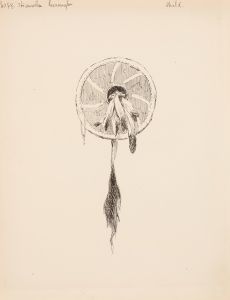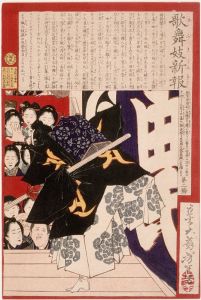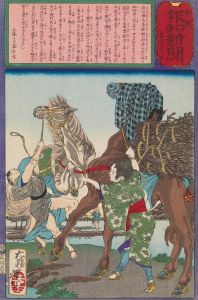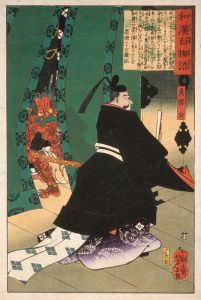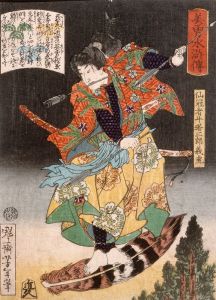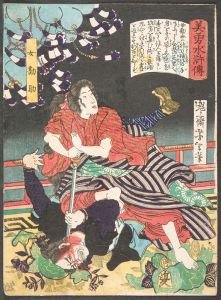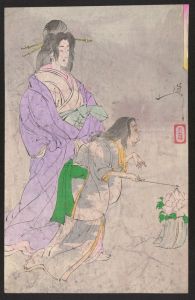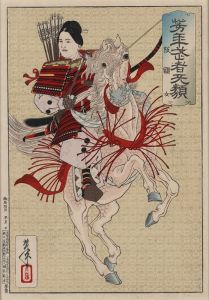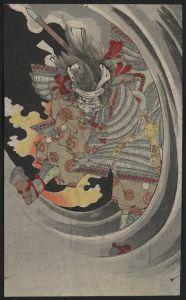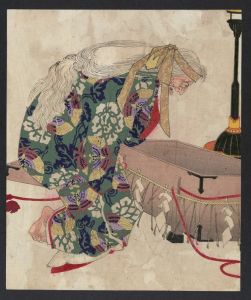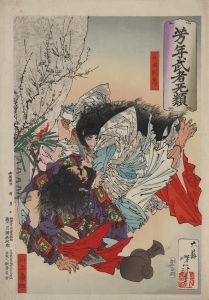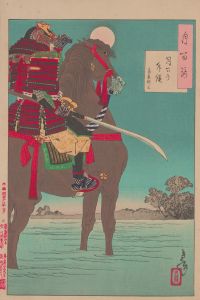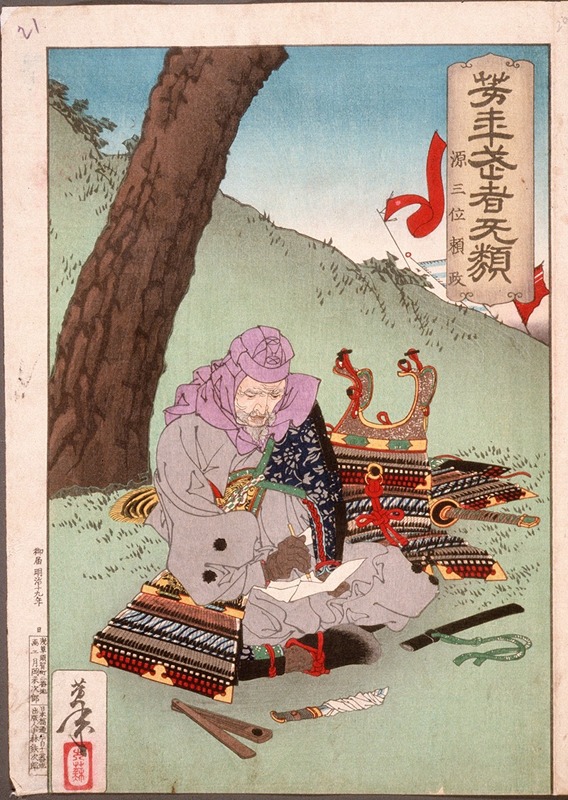
Minamoto Yorimasa Preparing to Commit Suicide
A hand-painted replica of Tsukioka Yoshitoshi’s masterpiece Minamoto Yorimasa Preparing to Commit Suicide, meticulously crafted by professional artists to capture the true essence of the original. Each piece is created with museum-quality canvas and rare mineral pigments, carefully painted by experienced artists with delicate brushstrokes and rich, layered colors to perfectly recreate the texture of the original artwork. Unlike machine-printed reproductions, this hand-painted version brings the painting to life, infused with the artist’s emotions and skill in every stroke. Whether for personal collection or home decoration, it instantly elevates the artistic atmosphere of any space.
"Minamoto Yorimasa Preparing to Commit Suicide" is a woodblock print created by the renowned Japanese artist Tsukioka Yoshitoshi. This artwork is part of Yoshitoshi's series "New Forms of Thirty-Six Ghosts" (Shinkei Sanjūrokkaisen), which was produced in the late 19th century, specifically around 1886-1892. Yoshitoshi is celebrated for his innovative approach to traditional ukiyo-e art, and this series is one of his most famous works, showcasing his mastery in depicting historical and supernatural themes.
The print depicts the historical figure Minamoto no Yorimasa, a samurai and poet who lived during the late Heian period (794-1185) in Japan. Yorimasa is a significant figure in Japanese history, known for his role in the Genpei War (1180-1185), a conflict between the Taira and Minamoto clans that ultimately led to the establishment of the Kamakura shogunate.
In this particular artwork, Yoshitoshi captures the poignant moment before Yorimasa's ritual suicide (seppuku) following the Battle of Uji in 1180. The battle was a critical early conflict in the Genpei War, where Yorimasa and his forces were defeated by the Taira clan. Facing inevitable defeat and capture, Yorimasa chose to commit seppuku, a form of ritual suicide that was considered an honorable way for a samurai to die.
The composition of the print is dramatic and emotionally charged. Yorimasa is depicted in a seated position, preparing for his final act. His expression is solemn and resolute, reflecting the gravity of his decision. The background often includes elements that evoke the battlefield or the somber atmosphere of the moment, such as dark clouds or the presence of his loyal retainers who are also preparing to follow their master in death.
Yoshitoshi's use of color and line work in this print is exemplary of his style. The detailed rendering of Yorimasa's armor and clothing, as well as the careful attention to facial expressions, highlights Yoshitoshi's skill in conveying both the physical and emotional aspects of the scene. The print not only serves as a historical record but also as a powerful artistic interpretation of a significant event in Japanese history.
"Minamoto Yorimasa Preparing to Commit Suicide" is a testament to Yoshitoshi's ability to blend historical narrative with artistic expression. It remains a poignant reminder of the samurai code of honor and the tragic consequences of the Genpei War. This artwork, along with the rest of the "New Forms of Thirty-Six Ghosts" series, continues to be celebrated for its artistic merit and historical significance, offering insight into the cultural and historical context of late 19th-century Japan.





